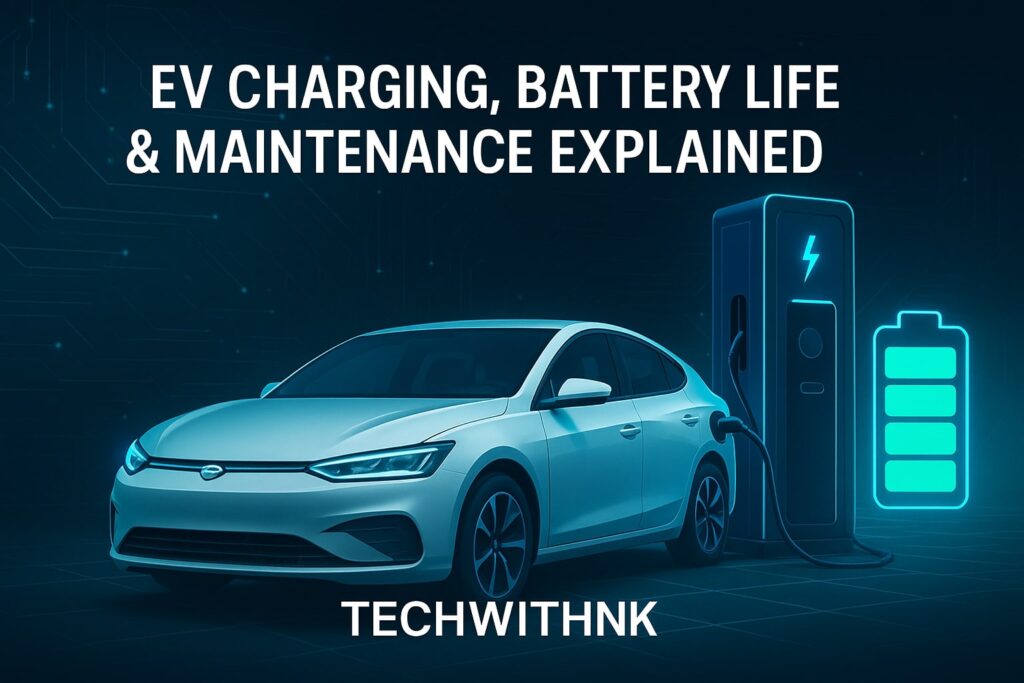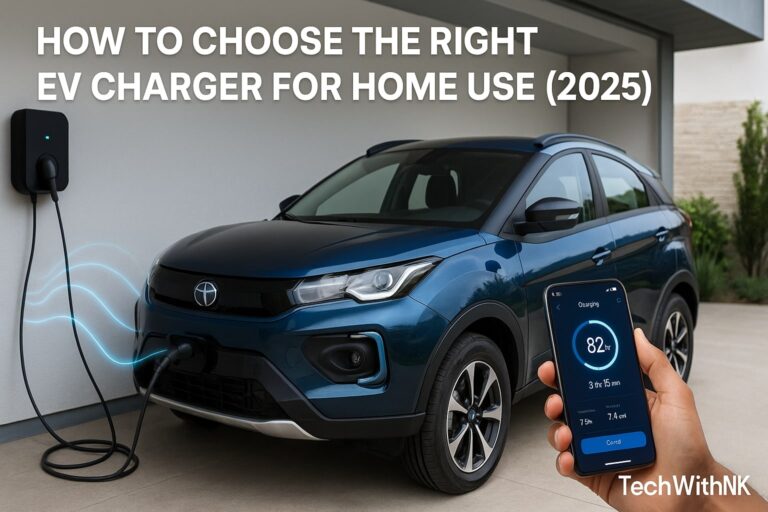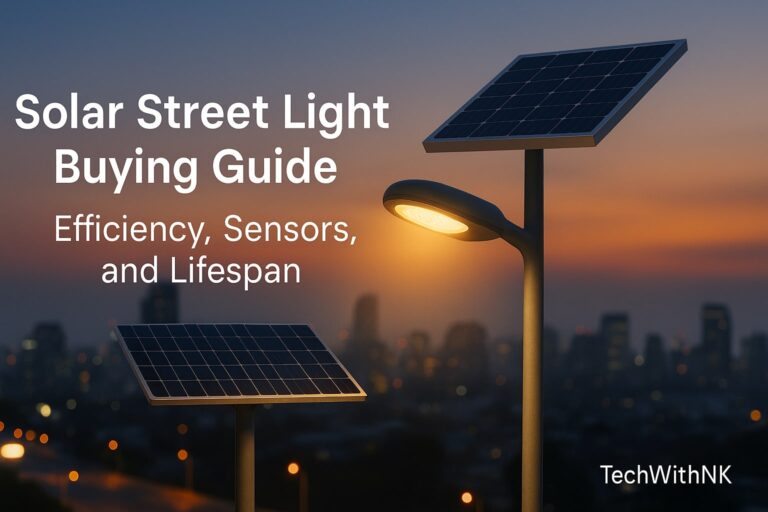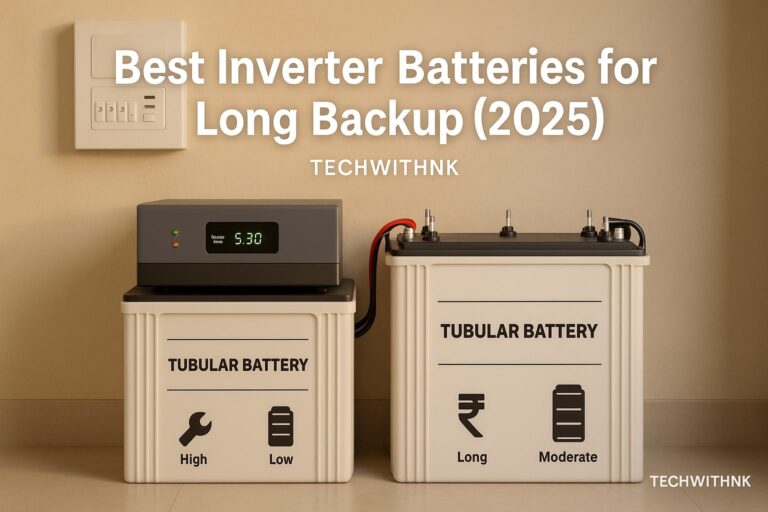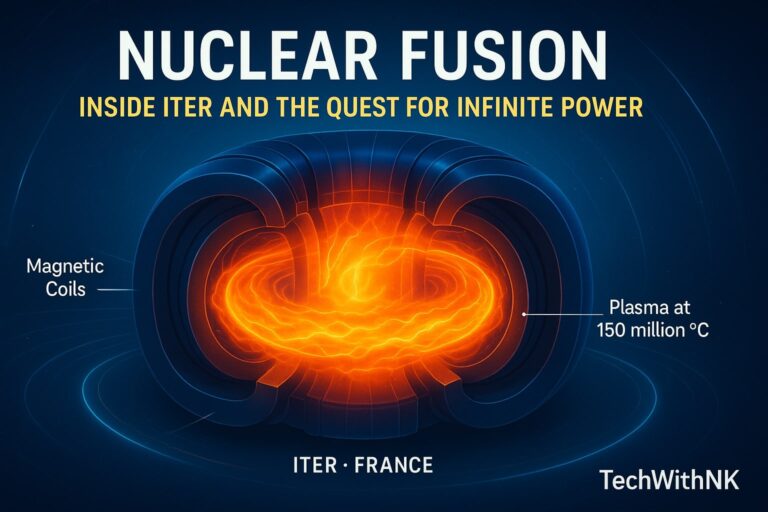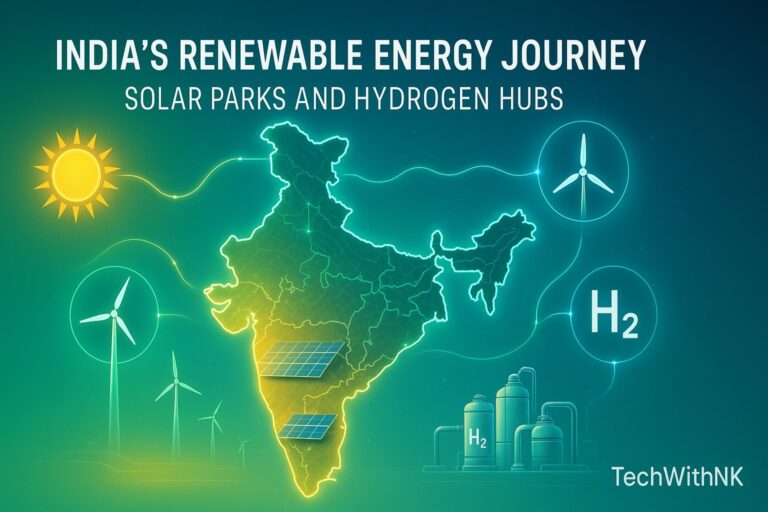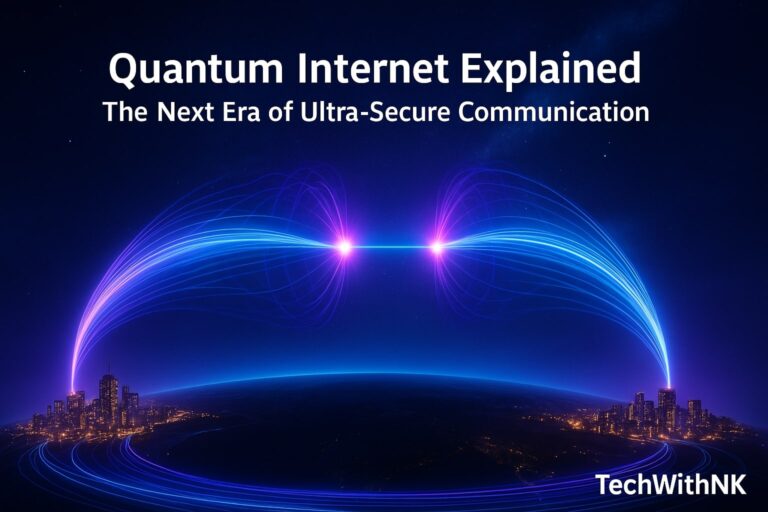🚘 Introduction
Electric Vehicles (EVs) are redefining the future of mobility. From personal scooters to luxury sedans, the silent hum of electric power is replacing the roar of combustion engines. But behind this green revolution lie three key pillars — charging, battery life, and maintenance.
Understanding how your EV charges, how the battery degrades over time, and how to maintain it properly can extend lifespan, improve range, and save thousands in replacement costs. Whether you own a Tata Nexon EV, Ola S1, Tesla Model 3, or BYD Atto 3 — this guide explains everything you need to know.
How EV Charging Works
EV charging is simply the process of transferring electricity from the grid to your EV’s battery. However, not all chargers are the same. The world uses three primary charging levels based on power output and speed.
⚡ Level 1 – Slow Charging (AC)
Power Output: 2–3 kW
Connector: Standard 3-pin plug
Charging Time: 8–12 hours (for 30–40 kWh battery)
Use Case: Home charging overnight
Example: Tata Nexon EV using a 15A home socket
Level 1 charging converts AC power from your wall into DC inside the EV via the onboard charger. It’s slow but gentle — ideal for maintaining battery health.
⚡ Level 2 – Fast AC Charging
Power Output: 7–22 kW
Connector: Type 2 (most common globally)
Charging Time: 3–6 hours
Use Case: Home wall box chargers or public AC stations
Example: MG ZS EV home wall box (7.4 kW)
Here, a dedicated EVSE (Electric Vehicle Supply Equipment) supplies more current safely, speeding up charging without damaging the battery.
⚡ Level 3 – DC Fast Charging
Power Output: 50 kW to 350 kW
Connector: CCS2 (India, EU), CHAdeMO (Japan), NACS (Tesla)
Charging Time: 30–60 minutes (up to 80%)
Use Case: Public highways and EV corridors
Example: Tata Nexon EV 0–80% in 50 mins (30–50 kW DC charger)
Unlike AC chargers, DC chargers bypass the onboard converter and feed direct DC power into the battery. They’re ideal for long trips but should be used sparingly to reduce cell stress.
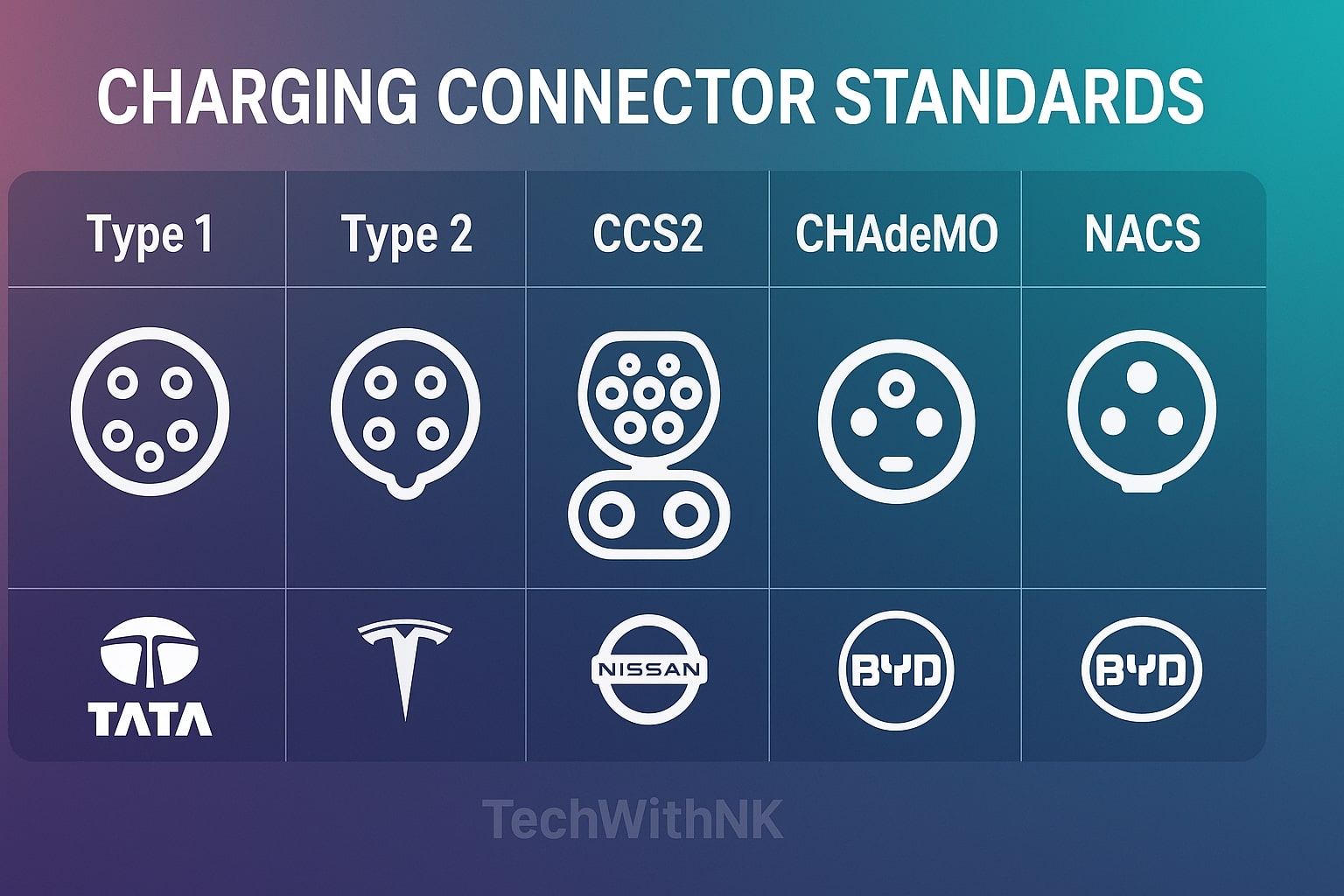
EV Charging Connectors Explained
| Connector Type | Current | Power (kW) | Common In | Used By |
|---|---|---|---|---|
| Type 1 | AC | Up to 7.4 | USA, Japan | Older Nissan, Ford |
| Type 2 | AC | 7–22 | India, EU | MG, BYD, Tata |
| CCS2 | DC | 50–350 | Global | Tata, BYD, Hyundai, Kia |
| CHAdeMO | DC | 50 | Japan | Nissan Leaf |
| NACS | DC | 250+ | USA | Tesla |
In India, CCS2 is becoming the universal standard for all modern EVs, ensuring compatibility across different chargers and brands.
EV Battery Types & Chemistry
The battery is the heart of every EV. Its type determines range, performance, and lifespan.
🔋 Lithium-Ion (Li-ion)
Most common battery chemistry today.
Energy Density: High
Lifespan: 1000–2000 cycles
Used in: Tata Nexon EV, Hyundai Kona, Tesla Model 3
Pros: Lightweight, efficient, good energy storage
Cons: Sensitive to heat and overcharging
🔋 Lithium Iron Phosphate (LFP)
Safer chemistry with long cycle life.
Lifespan: 2500–4000 cycles
Used in: BYD Atto 3, Tata Tiago EV, MG Comet
Pros: Thermally stable, affordable, long life
Cons: Lower energy density → slightly less range
🔋 Nickel Manganese Cobalt (NMC)
High-performance chemistry used in premium EVs.
Used in: Hyundai Ioniq 5, Kia EV6, MG ZS EV
Pros: High power & fast charging support
Cons: Expensive, cobalt mining concerns
🔋 Solid-State Batteries (Future Tech)
Next-generation technology under development.
Replaces liquid electrolyte with solid ceramic.
Advantages: Higher energy density, faster charging, safer
Expected in: 2027–2030 (Toyota, QuantumScape prototypes)
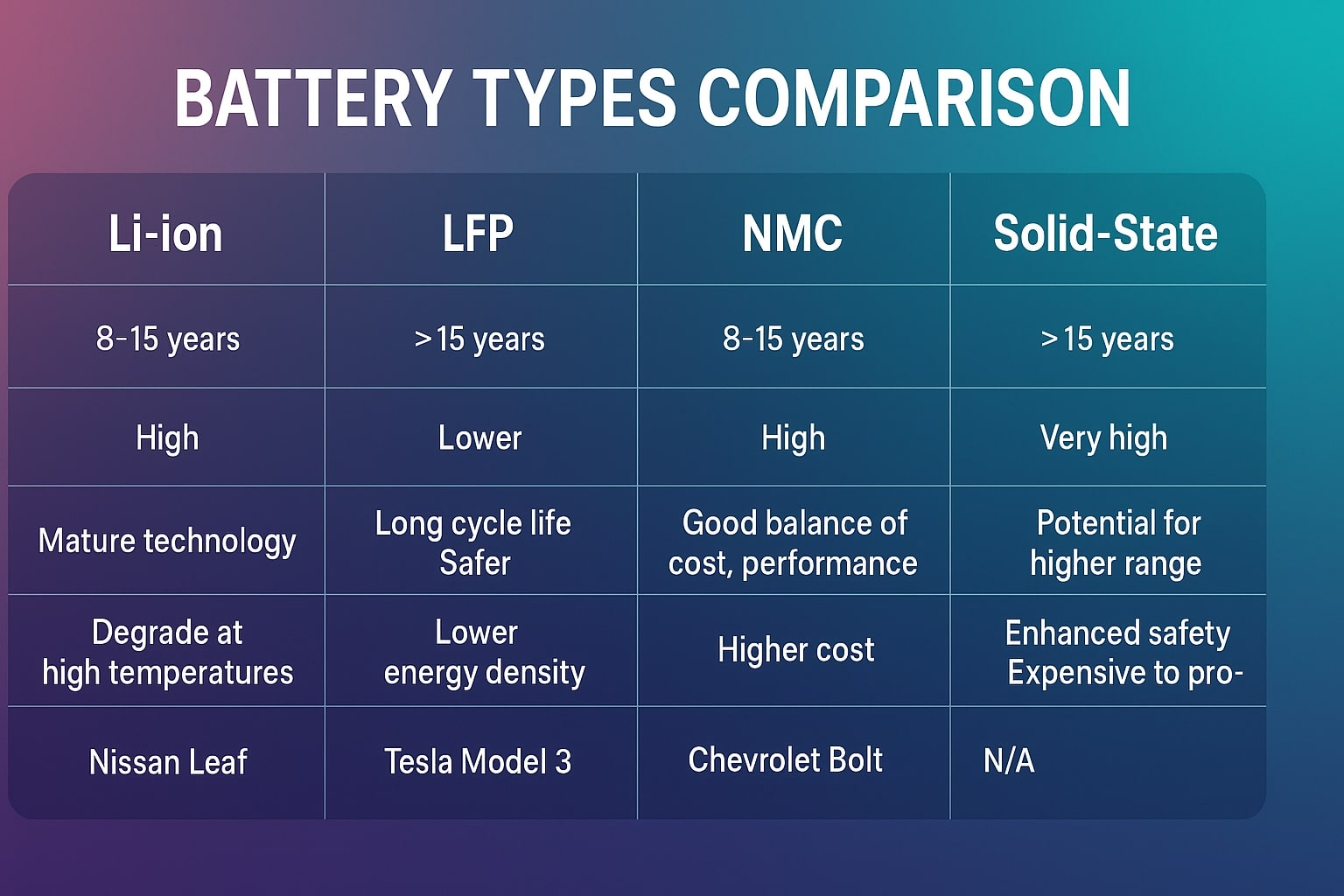
How EV Charging Affects Battery Life
Battery health depends on how you charge it. Each charging cycle gradually reduces capacity. But proper habits can extend life from 8 years to 12+ years.
Key Battery Life Factors
Depth of Discharge (DoD): Avoid draining below 10% or charging beyond 90%.
Charging Speed: Frequent DC fast charging increases cell degradation.
Temperature: High ambient heat (>35°C) accelerates aging.
Storage State: Store at 40–60% if not used for long periods.
Charging Pattern: Slow overnight charging is best for daily use.
🔋 Typical Battery Lifespan (Real-World)
| EV Model | Battery Type | Warranty | Expected Life |
|---|---|---|---|
| Tata Nexon EV | Li-ion | 8 yrs / 1.6 lakh km | 8–10 years |
| MG ZS EV | NMC | 8 yrs / 1.5 lakh km | 10–12 years |
| Tesla Model 3 | NCA | 8 yrs / 1.9 lakh km | 10–15 years |
| BYD Atto 3 | LFP | 8 yrs / 1.6 lakh km | 12–15 years |
EV Battery Maintenance Tips
Avoid 100% charge daily – stop at 80–90%.
Use DC fast charging occasionally, not daily.
Park in shade or cool place – heat is the battery’s worst enemy.
Keep software updated – BMS (Battery Management System) improves efficiency.
Check for charging port cleanliness – avoid dust and moisture.
Use OEM chargers only – third-party cables may cause imbalance.
Drive smoothly – aggressive acceleration shortens life.
Myths vs Facts
| Myth | Reality |
|---|---|
| “Fast charging kills the battery.” | Occasional use is fine; modern BMS protects cells. |
| “EV batteries need replacement every few years.” | Quality batteries last 8–12 years with care. |
| “You must always charge to 100%.” | Optimal range is 20–90%. |
| “Cold weather ruins EVs.” | It reduces efficiency temporarily, not permanent damage. |
EV Charging Infrastructure in India (2025)
India’s EV ecosystem is growing rapidly thanks to FAME II, PLI, and EV Policy 2025.
🚗 Key Highlights
Over 12,000+ public chargers installed by 2025.
Oil companies like IOCL, BPCL, HPCL adding EV stations nationwide.
Tata Power EV Charging Network expanding across 550+ cities.
Bharat DC-001 (15–30 kW) and CCS2 (30–150 kW) chargers deployed.
Metro cities (Delhi, Pune, Bangalore, Hyderabad) lead installations.
🌏 Future Targets
1 charger every 25 km on highways (by 2030).
100% electrification of government vehicles and buses.
Integration of solar + battery storage charging hubs.
Future of EV Batteries & Charging
🚀 Ultra-Fast Charging (350+ kW)
0–80% in under 15 minutes (already in Porsche Taycan, Kia EV6).
Requires 800V architecture (Hyundai, BYD, Tata in development).
🔋 Solid-State Revolution
Expected energy density 2–3× higher than Li-ion.
1000 km range EVs possible by 2030.
🌞 Vehicle-to-Grid (V2G)
EVs will soon send power back to the grid during peak hours.
Bidirectional chargers already in testing by Tata Power & MG India.
🧠 Conclusion
EVs are more than just cars — they’re computers on wheels powered by chemistry and electricity. Understanding your EV’s charging pattern, battery behavior, and maintenance can maximize performance and reliability for years.
As India and the world move toward clean mobility, adopting the right charging habits today ensures your EV stays efficient tomorrow.
Drive smart, charge wisely, and stay powered — the future is electric ⚡.
How long does an EV battery last?
Most EV batteries last 8–12 years or over 1.5 lakh km, depending on usage and charging habits.
Can I charge my EV daily at home?
Yes, but avoid full 100% charging daily — stop around 80–90% to improve lifespan.
Is fast charging harmful?
No, occasional fast charging is fine. Regular slow AC charging is ideal for battery health.
